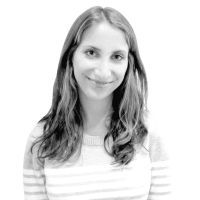The Other Nobel Winners

The 2013 Nobel winners aren’t entirely defined by disarmament and superbly crafted short stories. Don’t be afraid of the scientific jargon: The winners of the less-talked-about three Nobel Prizes are as worthy of your attention.
The physicists who found the Higgs boson particle, chemists who revolutionized computer modeling, and researchers aiding in the fight against diabetes and immune disorders were awarded the three Nobel Prizes in the sciences this year. With a combined 130 years of research among the three winning groups, these are the folks advancing humanity through the 21st century by revolutionizing modern medicine and investigating the core foundations of our being. While not as widely understood or buzzed about as the peace and literature prizes, the below Nobel Prize winners have been slaving away in labs in their quest to revolutionize science and medicine and our understanding of the universe. So, lest we forget the other three-fifths of the Nobel awardees while caught up in the hubbub around Malala’s snub and Alice Munro’s emotion-filled fiction, here is a cheat sheet on 2013’s winners.
Nobel Prize in Chemistry
Harvard’s Martin Karplus, Stanford’s Michael Levitt, and University of Southern California Professor Arieh Warshel began combing chemistry with quantum physics in computer-simulated research that illustrated chemical reactions through complex virtual programs. In the 1970s, it was groundbreaking for a school of practice that otherwise used toy-like 3-D models. By developing computer-modeling systems that allow researchers to slow down the otherwise lighting-fast movements of chemical reactions, they could break down molecules and their interactions. In doing so, the need for some forms of animal testing for new drugs was eliminated; solar cells used for energy production can be optimized for efficiency; and researchers are able to battle mutating viruses like HIV. The Royal Swedish Academy of Sciences awarded Karplus, Levitt, and Warshel the prize “for the development of multiscale models for complex chemical systems.”
Nobel Prize in Physics
In July 2012, headlines screamed of the possible discovery of the “God particle” by scientists at CERN. But for Francois Englert, of Begium’s Université libre de Bruxelles, and the University of Edinburgh’s Peter Higgs, this was just a final confirmation of what they already knew. For 50 years, scientists had predicted the existence of the particle we now know as Higgs boson, which gives mass to matter. Higgs and Englert first published landmark research in the ’60s showing how particles and forces in the universe interact. Joining the storied ranks of Marie Curie and Albert Einstein, Englert and Higgs were granted the award “for the theoretical discovery of a mechanism that contributes to our understanding of the origin of mass of subatomic particles, and which recently was confirmed through the discovery of the predicted fundamental particle, by the ATLAS and CMS experiments at CERN’s Large Hadron Collider.” Higgs, who does not own a cellphone, was informed of his win by a former neighbor who congratulated him on the news in passing.
Nobel Prize in Physiology or Medicine
Our bodies’ cells decide when and where to distribute molecules, but how? Yale Professor James Rothman, UC Berkeley Professor Randy Shekman, and Stanford’s Dr. Thomas Südhof found the cell-to-cell process that regulates the transfer of molecular holdings. Each figured out one piece of the puzzle, from identifying the genes involved in trafficking the packages of molecules; to the process of fusing the packages together during transmission; to the way in which the signals are relayed for precision transfers. Their discoveries, made through research of the past 40 years, have aided in the fight against diseases like diabetes and immune disorders, and helped in the creation of pharmaceutical products like insulin. The three scientists were funded with an estimated $49 million in grants from the National Institutes of Health—a federal organization that, ironically, is currently closed as part of the government shutdown. The Nobel committee awarded the three the prize “for their discoveries of machinery regulating vesicle traffic, a major transport system in our cells.”






